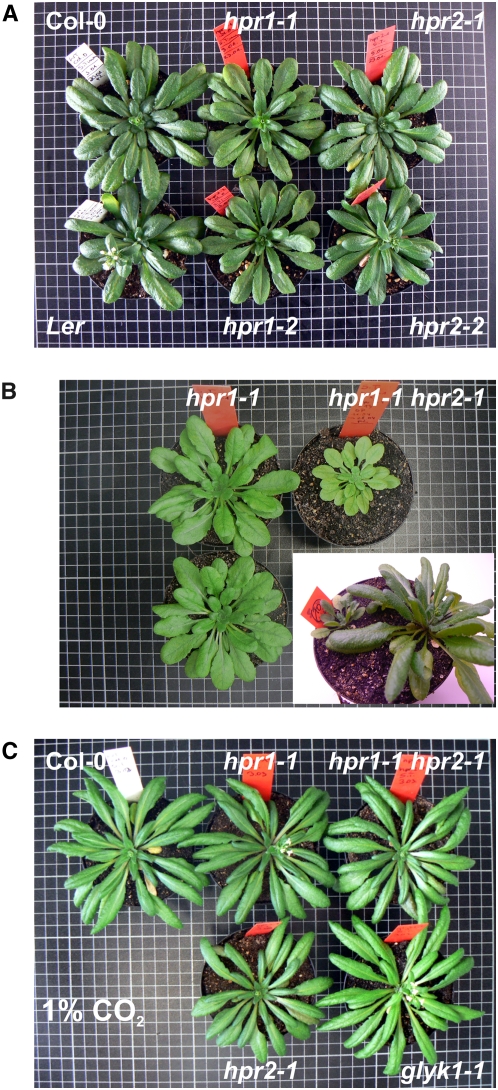Figure 2.
The Individual Deletion of Either HPR1 or HPR2 Is Well Tolerated in Normal Air, but Combined Deletion Causes Considerable Air Sensitivity.
Plants were grown in normal air for 6 weeks with the exception of the two plants shown in the inset in (B).
(A) Four individual T-DNA insertion lines isolated during this work in comparison with wild-type plants (12/12-h light/dark cycle; Col-0 for comparison with hpr1-1, hpr1-2, and hpr2-1; Landsberg erecta [Ler] for comparison with hpr2-2).
(B) Two hpr1-1 individuals in comparison with the hpr1-1 hpr2-2 double mutant (10/14-h light/dark cycle). The inset shows a double mutant (left) next to a wild-type plant (right) from a homozygosity screening experiment.
(C) Growth at elevated CO2 normalizes the phenotype of the individual and double mutants. A glycerate 3-kinase–deficient air-hypersensitive photorespiratory mutant, glyk1-1, is shown for comparison (12/12-h light/dark cycle, 1% CO2).

